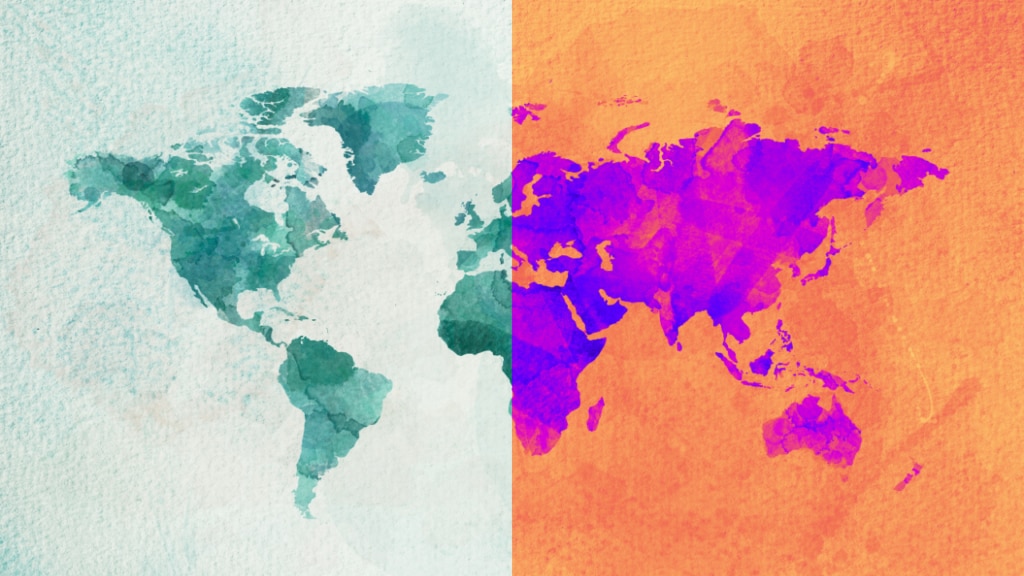Tahir Ahmed, Finland

In the early 20th century, a pervasive fear known as the “Muhammadan danger” swept across the Western world, driven by the belief that Islam posed a serious and imminent threat to European civilisation. This fear was often fueled by an exaggerated perception of Islam as an aggressive force bent on conquest, with visions of a global jihad leading to the expulsion of Europeans from Asia and Africa. A century later, similar anxieties continue to shape political discourse, with many still perceiving Islam as a violent, expansionist religion and terms like “Islamophobia” are widespread showcasing a general worldview of Islam. However, when we examine these fears through the lens of history and contemporary scholarship, we find that these notions are deeply rooted in misunderstandings, political agendas, and propagation of selective interpretations of both Islamic teachings and history. In this article, we explore how the perception of Islam as a “dangerous” force, once prevalent in the early 1900’s, still resonates today – and why this perception, despite being overstated then and now, requires a closer, more nuanced examination.
Crawford H Toy’s bold analysis
On 9 June 1905 in Finland, a Swedish language newspaper, Abo-Tiding, published an interesting article highlighting the political opinion and analysis by famous American, Crawford H Toy (1836–1919) who was a scholar and professor, primarily known for his work in the field of Oriental languages and Biblical studies. He was a prominent figure in 19th-century academic circles and a professor at Harvard University, where he specialised in Semitic languages, including Arabic, Hebrew, and other languages of the Middle East. Toy’s views were often progressive for his time. He was associated with a more liberal, scholarly approach to religion, was known for challenging traditional interpretations of scripture and was a converted unitarian Christian who believed in the unity of God.
His testimony regarding the perfect example of Prophet Muhammadsa and acknowledgment of the true and peaceful teachings of the Promised Messiahas are still exemplary for the world to read in regards to anti-Islam perception. Below is the translation of this article for the people to ponder. It states:
“Alongside the fantastically exaggerated ‘yellow peril,’ which purportedly threatens the West from China’s awakening millions, some foreign writers in recent years have speculated about the possibility of an approaching Muslim danger. It has been suggested that a holy war, or ‘jihad,’ is a central tenet of the Islamic faith and that such a war would likely result in the complete expulsion of Europeans from both Asia and Africa. Additionally, it is claimed that a general uprising against the ‘infidels’ is now genuinely being prepared among Islam’s nearly 200 million adherents, who count among their ranks fearsome masses of extremely combative warriors.
“An American scholar, Crawford H Toy, professor of Oriental languages at Harvard University, has spoken out against this narrative, arguing that this supposed danger has also been greatly exaggerated. He first points out that the Arabic word jihad does not necessarily mean holy war. While it can signify an armed effort, its usual meaning is a serious struggle of a peaceful nature – through persuasion, financial offerings, passive resistance, and so forth. It appears 36 times in the Quran, and in most cases, it clearly does not refer to combat but should instead be translated as ‘striving.’
“Muhammad himself did not advocate unprovoked attacks on those of different faiths. In many cases, Muslim conquerors did not force subjugated peoples to adopt Islam but allowed them to retain their own beliefs if they so desired. This stands in stark contrast to some Christian missionaries, such as Charlemagne, who ‘converted’ the Saxons by slaughtering many and enslaving the survivors. Nonetheless, it is true that since the time of the Prophet’s immediate successors, Muslim powers have consistently pursued conquests and vigorous religious propagation. Muslim lawmakers have interpreted the Quran in ways suggesting that it commands – or at least permits – the spread of Islam by fire and sword. Despite this, the author does not believe there is a genuine threat to the rest of the world from Muslims.
“Turkey cannot act without the consent of the European great powers. Egypt is practically a British province. Morocco is on its way to becoming a French province. In Arabia, there is no organised society apart from the Wahhabis, who lack military power. (Here, the author’s claims are contradicted by events, as shown by reports of the great revolt against the Sultan; however, expansion beyond Arabia’s borders may not be feared.) Persia and Afghanistan are little more than pawns in the rivalry between England and Russia. India, home to the largest Muslim population in the world, has no political organisation among its Muslims, who seem to be loyal subjects of the British crown.
“Regarding India’s Muslims, it is notable that a recent messianic figure among them, Mirza Ghulam Ahmad, has strongly emphasised in an article in [The] Review of Religions that, like the first Messiah, he was sent to preach peace and to abolish all war. ‘No civilised nation resorts to the sword in religious matters today,’ writes this new prophet. ‘Belief in a bloodthirsty Mahdi is contrary to divine will.’ Pointing out that Christian nations are far superior to Muslims in the art of war, he sees this as evidence that God does not intend Islam to spread through warfare.
“Bloodthirsty Mahdis do occasionally emerge in Muslim lands. However, the fate of the most recent one, in Sudan, is likely to deter would-be imitators. Legitimate Muslim authorities always oppose such movements, as do the powerful brotherhoods in Africa. […]”
Conclusion
As we consider the perceptions of Islam today, it is clear that many of the fears driving current discourse are rooted in the same historical misunderstandings and political motives that characterised early 20th-century views. While violent ideologies do exist, they are not representative of the broader Muslim world. The true message of Islam, like that of many other religions, calls for peace, tolerance, and coexistence.
In conclusion, just as the American scholar Crawford H Toy argued a century ago, there is no substantial threat to the world from Islam in the form of an impending global jihad or uprising. The modern “Muhammadan danger” or “Islamophobia” remains, in many ways, a reflection of political fears, historical misinterpretations, and a lack of understanding of the true essence of the Islamic faith. While geopolitical tensions continue to shape perceptions, the peaceful teachings of Islam – rooted in the Quran and exemplified by the Ahmadiyya Muslim Jamaat – offer a path forward that prioritises education, dialogue, and cooperation over conflict.
As we move further into the 21st century, it is important for us to break free from the myths and stereotypes that have so often defined our understanding of Islam and the best place where we can learn this is the institution of Khilafat within the Ahmadiyya Muslim Jamaat. Hazrat Mirza Masroor Ahmadaa, Khalifatul Masih V, exemplifies and portrays the true meaning of Jihad by striving for peace in the world. The future will show whether these misunderstandings persist, or if a more accurate and peaceful view of Islam will prevail, fostering greater global harmony. We hope and pray that the world will come to this realisation soon and save itself from the horrors of hate and war that it is striving for.

